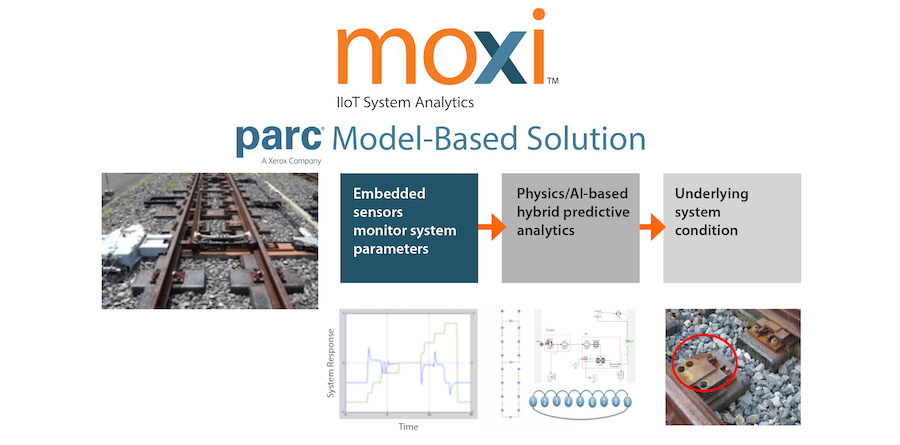Rail systems in Japan and Australia are using a new technology for maintenance that employs extensive sensor arrays and artificial intelligence to anticipate needs. The system, called MOXI, is designed to increase the efficiency and cost-effectiveness of maintaining bridges, tracks and other critical transportation assets.
Atsushi Yokoyama, president and representative director of JR East Facility Management Co. Ltd., says he began working with Palo Alto Research Center Inc., the technology provider, in 2012 and started deploying MOXI in 2015. “We have collaborated with PARC regarding train door degradation and the image analysis of the defects of rail surfaces,” he says. “I am sure that we can improve maintenance costs [with MOXI].”
According to PARC, Australian state railway VicTrack and East Japan Railway have been using the technology to predict adverse car and track conditions to better than 90% accuracy. The improvements enable the railway entities to pinpoint exactly where the next problems are most likely to occur, to reduce operating costs and keep trains running safely and on-time.
Ajay Raghavan, PARC’s strategic execution director, says the technology originates from work at Xerox, which owns PARC. “We were looking at developing diagnostics for high-end production printers,” he says. That expanded into a business model to explore with other clients and domains, he says. The system has potential applications for any transportation infrastructure, as well as power grid systems, manufacturing and data centers.
The technology builds on low-cost fiber-optic strand sensors that are about twice the thickness of human hair. The sensors report dimensional changes and other anomalies. These are then processed and compared with expected system behaviors and analyzed to isolate and infer root causes of faults within sub-systems, and pinpoint areas of potential concern.
The algorithms can probabilistically predict equipment lifespans and offer actionable recommendations to aid response and planning.
“We embed fiber optics sensors [that are] about 100-200 microns in diameter,” says Raghavan. “A long-span bridge can have a sparse network of fibers and thousands of sensing points. A computer does initial data collection and extraction. The next step is transmitting the data to the cloud or other remote server [where] analytics details diagnosis and predictions, then action recommendations.”
The company says it will work with any sensor networks already installed in a system, and that its researchers will work with engineers, maintenance staff or contractors on site to “improve or invent them” to ensure the collection of significant, accurate and reliable data with which to model system behavior. Raghavan says ConEdison in New York has recently begun deploying the technology, and another Australian transportation agency is signing on.
“We have a diverse spectrum of applications—transportation, energy, manufacturing, defense, etc. The core element is to go deep inside systems and monitor health and conditions, then make sense of all the data in the system context,” says Raghavan. “We get an accurate read on what’s happening to classify the condition and alert asset operators and managers.”
Currently, most infrastructure operators use a time-based, reactive approach, meaning personnel simply inspect track components every few months to look for deterioration and damage. “This is a huge paradigm shift for many clients who wrestle with these system issues on a reactive basis today,” says Raghavan.
Raghavan recalls a recent incident where a bridge in Oakland, Calif., had to be shut down due to unexpected spalling, causing a huge traffic backlog. MOXI “potentially could have prevented that,” he says.




Post a comment to this article
Report Abusive Comment